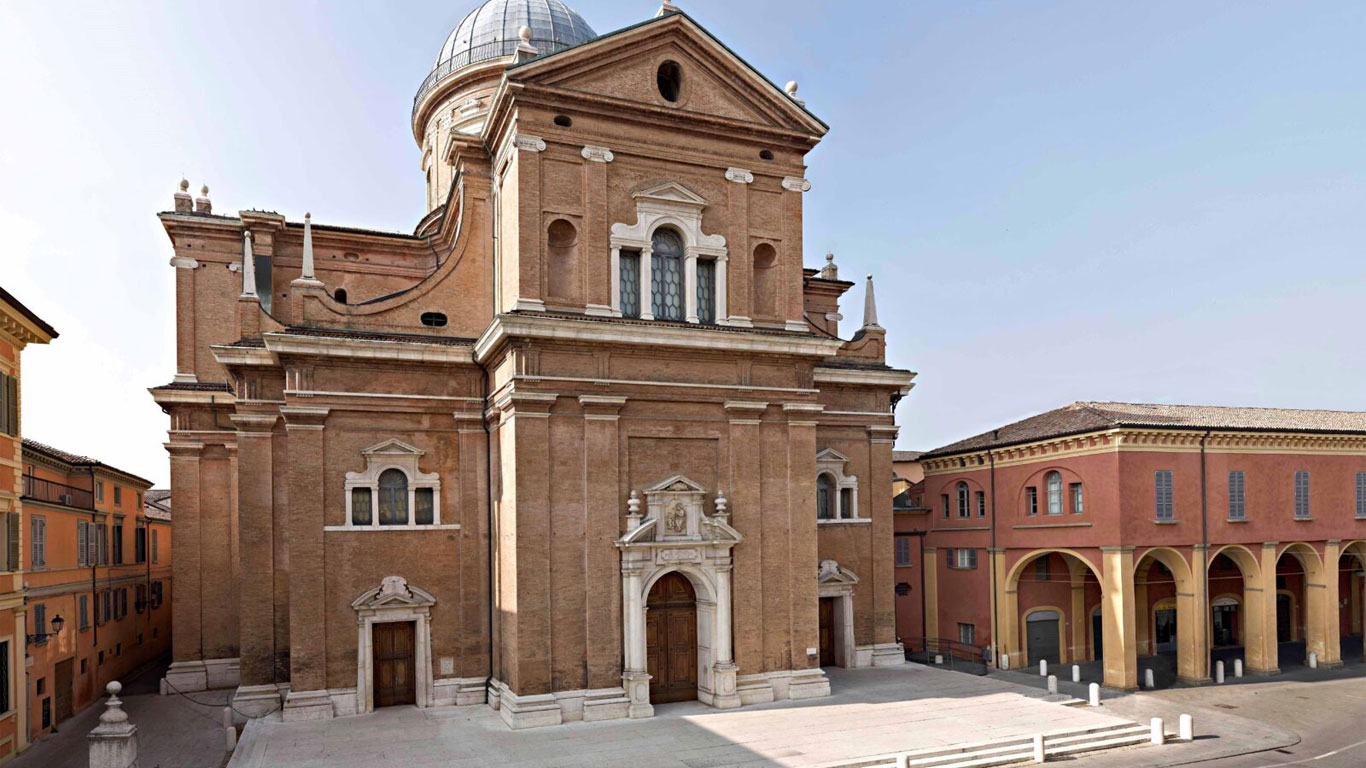42121 Reggio Emilia
After several centuries, pilgrims have returned to the convent of the Blessed Virgin of Ghiara, whose foundation took place in 1313, the year in which the religious Order of the Servants of Mary settled in Reggio.
The return began with the Jubilee celebrations in 2000, for which the convent’s main cloister with its hostel, capable of accommodating 100 people (entrance in Via Guasco), was included in the national plan of the ‘Pilgrim’s Ways’ and which a special grant allowed the municipality, which owns it, to renovate. The restoration of the Cloister is part of a larger and more articulated project to restructure and redevelop the entire complex formed by the Basilica and the Convent of the Order of the Servants of Mary.
The construction of the Great Cloister – the Small Cloister already existed – actually took place in 1715, with the need to enlarge the convent complex, as the construction of the great Basilica della Ghiara as we know it now, had drastically reduced the rest of the structure. The Napoleonic revolution in 1797 led to the suppression of the convent, which was fragmented into a plurality of functions.
The convent and its cloisters were to undergo further ups and downs before becoming the property of the municipality in 1868, which built a cooperative bakery there for the benefit of the poor and made a large number of the convent’s rooms available for a new primary schools. One hundred and thirty years after the Napoleonic suppression, the Servants of Mary obtained permission to return to live in the building.
With the renovation of the Great Cloister, the ancient function of accommodation proper to convents was restored (preliminary project architect Mauro Severi; work supervision engineer Daniele Pecorini). The beauty of the Great Cloister, which had been hidden by the fragmentation of the spaces and the multiplicity of uses over the centuries, re-emerges, as does the harmony of form in its integrity. The long portico, with its pavement, outlining the perimeter of the ground floor has returned to its former glory, as has the high architectural value and scenic quality of certain areas, including the noble 18th-century main staircase and the scenographic corridor on the first floor, which are also used for cultural activities and exhibitions. More than 18 kilometres of piping now snake through the structures of the ancient convent, allowing the most complete use, according to modern requirements, of the entire complex.
L’impianto illuminotecnico scenografico
volto a valorizzare il Santuario della Beata Vergine della Ghiara
è stato realizzato grazie a

